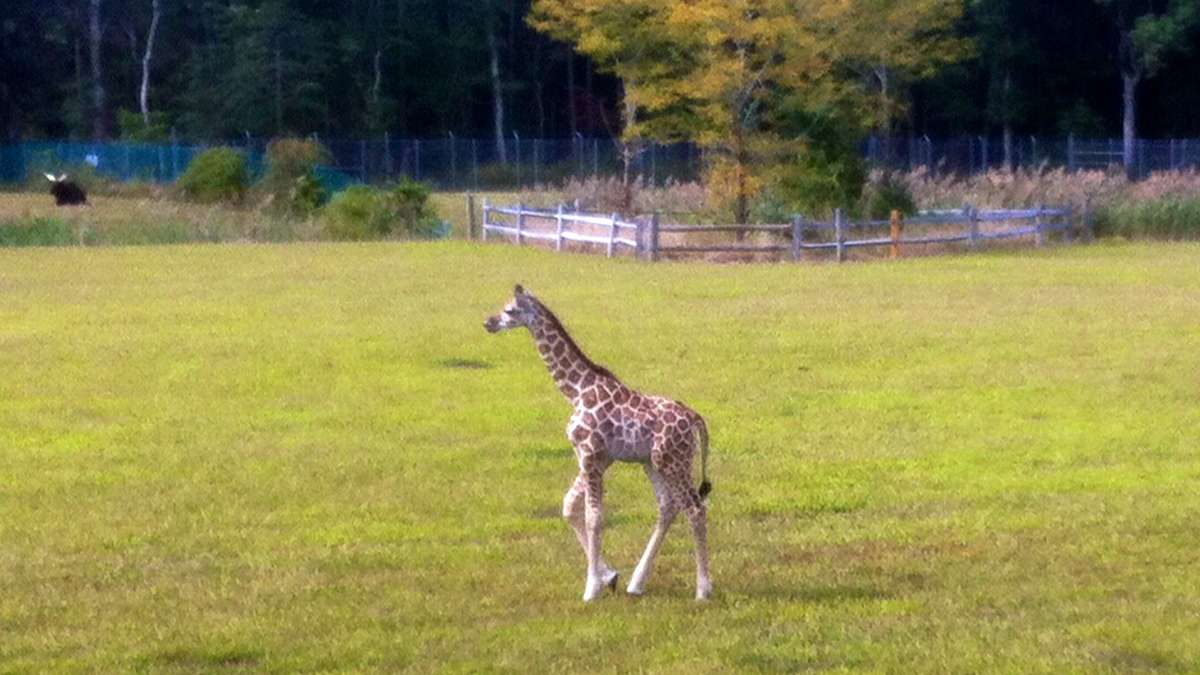Baby boom continues at Cape May County Zoo
It sounds like the plot of an Animal Planet reality show — I Didn’t Know I Was Pregnant: Zoo Edition.
Actually, it’s likely that Henrietta, a 4-year-old bison, knew she was pregnant, but her handlers at the Cape May County Zoo? Not so much.
So on Aug. 29, while zoo staff were glued to surveillance cameras trained on a female giraffe whom they knew was in the family way — more on that pregnancy in a second — Henrietta birthed a small female calf that came as a surprise to everyone.
“We came in in the morning and there was a calf,” said Alex Ernst, the zoo’s veterinarian. The father is Hank, an imposing 4-year-old bull bison.
With both a breeding-age female bison and a bull in the zoo’s small herd, Ernst said, “we knew there was action,” but they didn’t know if or when there had been a conception until the baby bison arrived.
The young American bison is a real Jersey Girl, as both her parents moved to the Cape May County Zoo from Six Flags Great Adventure 2010.
The giraffe came along at 5:15 a.m. on Sept. 2, a gangly baby girl nearly 6 feet tall and about 150 lbs., born to parents Joanie and Sterling after a well-monitored 15-month gestation. Joanie, a 7-year-old female from the Bronx Zoo, was a first-time mom, and watched closely by the zoo’s veterniarian and staff — hence the surveillance.
Sterling, on the other hand, was a ringer. The zoo brought him in a two years ago from Busch Gardens in Tampa, Florida, where he had already sired 15 calves. Now 17 years old, he’s clearly the head of the five-member giraffe herd at the zoo.
“He’s a proven male,” Ernst said, and their offspring was the first giraffe calf born at the zoo since 2001.
The young giraffe is as yet nameless, but the zoo plans to hold contests to let the public decide on what both she and the bison should be called. So far, both animals are doing what all infants do — learning to get around, sticking close to their mothers, nursing a lot, and growing. The giraffe has already added about six inches in height in its first three weeks of life, part of the roughly three feet she’ll gain in her first half-year, Ernst said.
Mike Mastalski, the zoo’s large animal keeper, is the guy in charge of watching over the baby giraffe. He described her as “pretty feisty.”
“I think she was up and around faster than other giraffes I’ve seen,” he said. “She likes our one female (giraffe), Aziza, I guess she’s like the ‘cool aunt.'”
Already this year, the 85-acre zoo had celebrated the births in April of a pair of snow leopard cubs, a male named Tushar and a female called Ramani, born to mom Himani. It was the fourth consecutive year the zoo had welcomed snow leopard cubs, and within a month or so, ground will be broken on a new habitat for them.
Last December, two female wallabies gave birth to joeys, and Ernst said those animals tend to reproduce several times once they get going. This past year has been the most successful reproductive year in the zoo’s 35-year history, officials said.
“Let everybody know, if they want to get pregnant, come down here to the zoo and drink the water, because it obviously works,” said Cape May County Freeholder E. Marie Hayes.
Much like some of the human children who toddled along the zoo’s wooden walkways during the giraffe showcase, the snow leopards were busy, tumbling around their pen fighting over a toy. Kids.
The zoo’s total population now numbers more than 550, but officials said they expect that to change.
They suspect one of the female ring-tail lemurs is pregnant. Stay tuned.
WHYY is your source for fact-based, in-depth journalism and information. As a nonprofit organization, we rely on financial support from readers like you. Please give today.









